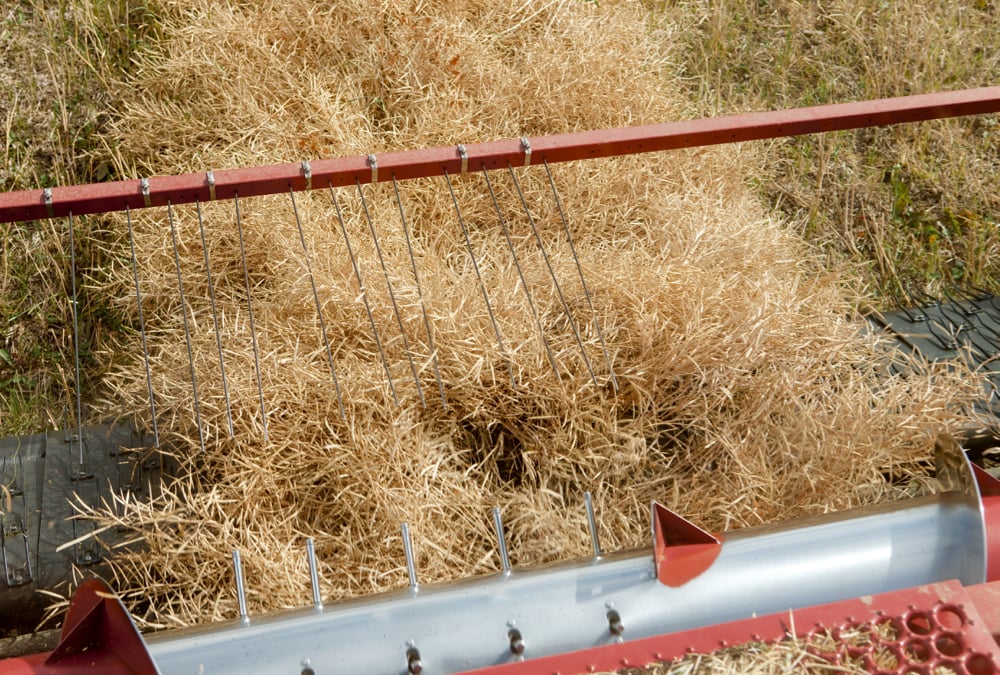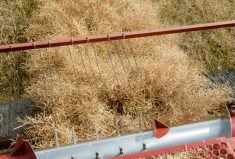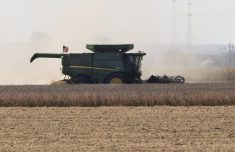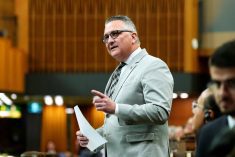With two of the last four years a washout for many producers, it’s time to rethink crop insurance and risk management programs in Manitoba, says the province’s agriculture minister.
It’s becoming clear that existing business risk management programs … can’t adequately meet farmer’s recovery needs,” said minister Ron Kostyshyn during a press conference at Ag Days in Brandon Jan. 21. “We’ve asked the task force to analyze the current policies, the programs and identify the gaps and (make) recommendations and new options.”
Bill Uruski, Manitoba Turkey Producers chair and a farmer from the Interlake region, will head up the task force.
Read Also

Alberta harvest wrapping up: report
Harvest operations advanced to 96 per cent complete in Alberta as of Oct. 7, with only a few late-seeded cereal and canola fields remaining, according to the latest provincial crop report.
Record spring rains caused severe overland flooding across southwestern Manitoba in 2014, causing more than 985,000 acres to go unseeded. A combination of saturated soils and spring rains washed out 2.9 million acres in 2011.
Doug Chorney, Keystone Agricultural Producers president, said the losses in 2011 and 2014 were unprecedented. If extreme and unpredictable weather becomes the new normal, producers will need more sophisticated tools to manage risk.
“We’re hearing from farmers that they can’t continue farming, if they’re going be faced with these challenges year after year,” said Chorney, who will sit on the task force. “This is not normal. This is extraordinary for people to go through events like this and it’s extraordinary for an insurance program … to meet the needs of producers in these conditions.”
Producers in flooded out areas say crop insurance functions when adverse weather annihilates one crop every five to 10 years. When cropland is flooded three out of five years, it reduces the average yield from the farm and lessens the crop insurance payment.
The task force will hold public consultations this spring and submit the report before the end of 2015.
Kostyshyn said Manitoba will lead the project but will collaborate with other jurisdictions on potential solutions.
“The sharing of this will be, first and foremost, with the federal government. Then we’ll have further discussions with other provinces.”
robert.arnason@producer.com
















